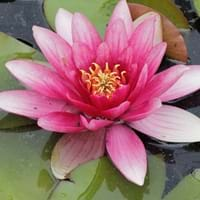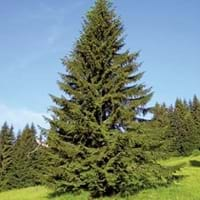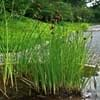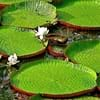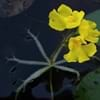Life Span
Perennial
Perennial
Type
Aquatics
Needled or Scaled Evergreen
Origin
World/Pandemic
Europe
Types
Not Available
not available
Habitat
Ponds
Not Available
USDA Hardiness Zone
4-9
3-8
Sunset Zone
21,22
A2, A3, 1a, 1b, 2a, 2b, 3a, 3b, 4, 5, 6, 14, 15, 16, 17
Habit
Not Available
Pyramidal
Minimum Height
Not Available
Flower Color
White, Yellow, Red, Orange, Pink, Magenta, Fuchsia, Coral, Peach, Blue Violet, Ivory
Non Flowering Plant
Flower Color Modifier
Bicolor
Bicolor
Fruit Color
Green
Non Fruiting Plant
Leaf Color in Spring
Green, Dark Green
Light Green, Dark Green
Leaf Color in Summer
Green, Dark Green
Dark Green
Leaf Color in Fall
Green, Dark Green
Dark Green
Leaf Color in Winter
Not Available
Dark Green
Leaf Shape
Round
Needle like
Plant Season
Summer, Fall
Spring, Summer, Fall, Winter
Sunlight
Full Sun, Partial Sun
Full Sun, Partial Sun
Type of Soil
Clay, Loam, Sand
Loam, Sand
The pH of Soil
Neutral
Acidic, Neutral
Soil Drainage
Poorly Drained
Well drained
Bloom Time
Indeterminate
Not Available
Tolerances
Wet Site
Drought
Where to Plant?
In Water
Ground
How to Plant?
Stem Planting
Seedlings
Plant Maintenance
Medium
Medium
Watering Requirements
Plant grows in water
Requires regular watering, Requires watering in the growing season
In Summer
Lots of watering
Lots of watering
In Spring
Moderate
Moderate
In Winter
Average Water
Average Water
Soil pH
Neutral
Acidic, Neutral
Soil Type
Clay, Loam, Sand
Loam, Sand
Soil Drainage Capacity
Poorly Drained
Well drained
Sun Exposure
Full Sun, Partial Sun
Full Sun, Partial Sun
Pruning
Remove damaged leaves, Remove dead branches, Remove dead leaves
Prune if you want to improve plant shape, Prune to stimulate growth, Remove dead leaves
Fertilizers
All-Purpose Liquid Fertilizer
All-Purpose Liquid Fertilizer
Pests and Diseases
Not Available
Cytospora canker, Needle rust, Rust
Plant Tolerance
Drought
Drought
Flowers
Showy
Not Available
Flower Petal Number
Single
Single
Foliage Texture
Coarse
Medium
Foliage Sheen
Glossy
Not Available
Self-Sowing
Not Available
Yes
Allergy
Not Available
no allergic reactions
Aesthetic Uses
Showy Purposes, Water gardening
Showy Purposes, Used as Christmas tree
Beauty Benefits
Not Available
Not Available
Environmental Uses
Air purification
Forms dense stands
Medicinal Uses
Not Available
Not Available
Part of Plant Used
Leaves, Root, Stem
Whole plant
Other Uses
Can be made into a herbal tea, Culinary use, Used as Ornamental plant, Used in herbal medicines
Used as Ornamental plant, used for making roof trusses, poles, joists, piles, Used in paper industry
Used As Indoor Plant
Yes
Yes
Used As Outdoor Plant
Yes
Yes
Garden Design
Water Gardens
Feature Plant, Hedges, Screening, Wind Break
Botanical Name
NYMPHAEA 'Charles de Meurville'
PICEA abies 'Acrocona'
Common Name
Charles de Meurville Waterlily, Hardy Daylily
Norway Spruce
In Hindi
Hardy Daylily
Norway Spruce
In German
Hardy Daylily
Fichte
In French
Hardy Daylily
épinette de Norvège
In Spanish
Hardy Daylily
picea de Noruega
In Greek
Hardy Daylily
Νορβηγία Spruce
In Portuguese
Hardy Daylily
Noruega Spruce
In Polish
Hardy Daylily
świerk pospolity
In Latin
Hardy Daylily
Norway Spruce
Phylum
Magnoliophyta
Coniferophyta
Class
Magnoliopsida
Pinopsida
Order
Nymphaeales
Pinales
Family
Nymphaeaceae
Pinaceae
Clade
Angiosperms
Not Available
Tribe
Not Available
Not Available
Subfamily
Not Available
Not Available
Number of Species
Not Available
Difference Between Hardy Daylily and Norway Spruce
If you are confused whether Hardy Daylily or Norway Spruce are same, here are some features about those plants to help you choose better. Many people think that these two plants have the same characteristics, but one can see Hardy Daylily and Norway Spruce Information and learn more about it. Fertilizers required for proper growth of Hardy Daylily are All-Purpose Liquid Fertilizer, whereas for Norway Spruce fertilizers required are All-Purpose Liquid Fertilizer. Hence, one should know the basic difference between Hardy Daylily and Norway Spruce if you are planning to have them in your garden to enhance its beauty.
<
Flowering PlantsImportance of Hardy Daylily and Norway Spruce
Want to have the most appropriate plant for your garden? You might want to know the importance of Hardy Daylily and Norway Spruce. Basically, these two plants vary in many aspects. Compare Hardy Daylily and Norway Spruce as they differ in many characteristics such as their life, care, benefits, facts, etc. Every gardener must at least have the slightest clue about the plants he wants to plant in his garden. Compare their benefits, which differ in many ways like facts and uses. The medicinal use of Hardy Daylily is Not Available whereas of Norway Spruce is Not Available. Hardy Daylily has beauty benefits as follows: Not Available while Norway Spruce has beauty benefits as follows: Not Available.
Compare Facts of Hardy Daylily vs Norway Spruce
How to choose the best garden plant for your garden depending upon its facts? Here garden plant comparison will help you to solve this query. Compare the facts of Hardy Daylily vs Norway Spruce and know which one to choose. As garden plants have benefits and other uses, allergy is also a major drawback of plants for some people. Allergic reactions of Hardy Daylily are Not Available whereas of Norway Spruce have no allergic reactions respectively. Having a fruit bearing plant in your garden can be a plus point of your garden. Hardy Daylily has no showy fruits and Norway Spruce has showy fruits. Also Hardy Daylily is not flowering and Norway Spruce is not flowering . You can compare Hardy Daylily and Norway Spruce facts and facts of other plants too.
